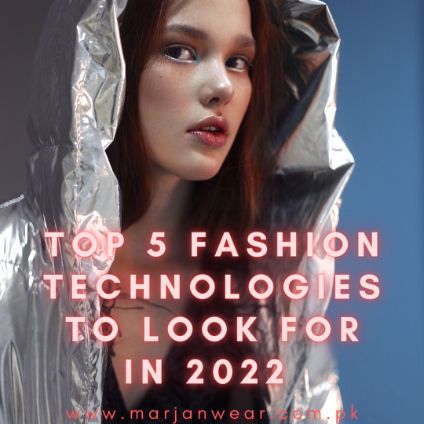The concept of “fashion technology” has captivated the attention of the globe in recent years. This article will explore the top five trends and technological advancements that will change the fashion industry. From the development of the stitching machines to the rise of e-commerce. The fashion industry has always been at the forefront of innovation.
Related: How to start a fashion business?
What is Fashion technology?
The term “fashion technology” refers to cutting-edge methods for acquiring materials and creating clothing. As well as how these are useful in sales, production, and logistics. Simply stated, fashion technology develops cutting-edge tools for the fashion industry in an effort to enhance how we develop and use clothing. The use of current technologies like artificial intelligence (AI) in fashion industries includes. 3D printing in replacement of sewing machines, chemical suede substitutes in place of genuine leather. Moreover, body scanners in place of measurement tapes, augmented reality and virtual reality (VR) for retail, and much more.
Fashion technologies’ advantages
We do indeed live in a technological age. Social media is altering the way that people perceive fashion and we can expect immediate access to the latest trends as soon as they appear on the runway. At the same time, younger generations look for things that are customizable to particular needs and tastes in order to grab attention. Additionally, “fast fashion” apparel appears to be increasingly gaining attractiveness.
Automated sewing machines
Robots that cut and stitch fabric, AI systems that forecast fashion trends, and virtual reality clothing. Numerous developments demonstrate how technology is simplifying, tailoring, and advancing the fashion industry.
AI product Designs
The way that brands approach product design and development is changing, with an emphasis on anticipating what consumers will want to purchase in the future. There is a misconception that AI will have an impact on humans in the future. However, we can argue that human engagement will always exist. Because machines themselves are programmed by humans. So, the one who believes that people will suffer as a result of technology adaptation is mistaken. The ability to leverage AI findings and translate them into attractive, wearable clothing depends on human input.
Fast fashion trends
This approach is already challenged by fast fashion, where products are quickly transferred from the catwalk to retail shelves. Companies like Zara and H&M are founded on speed and agility. Once these shops identify a new trend, they can use their distribution network and twitchy design systems to promote the trend as soon as feasible. This enables rapid fashion businesses to enter the market before conventional labels.
innovative textiles
Novel materials may represent the future of fashion since they offer designers another opportunity to grab attention and present themselves as an efficient choice. All evidence supports the concept that eco-friendly apparel and sustainable attire will dominate the fashion business in the future. Color-changing clothing may also be on the way. Hyper color-shifting T-shirts and mood rings were popular in the 1990s, but the most recent versions are much more advanced.
Innovation in Materials
Fashion companies are already looking for innovative ways to make sustainable clothing. To prevent harm to animals for the sake of clothing worldwide.
Watch out for these fashion trends in 2022: fashion technology.
Wearable tech
Wearable tech is always on the forefront from the first versions of the Fitbit to the most recent models of the Apple Watch. Wearables are becoming more fashionable and useful as a result of fashion industry leaders trying to adapt these technologies.
Digital twins
With the use of digital twins, locations, items, and activities can be virtually replicated. Additionally aids in reducing textile waste, accelerating production, and improving item transparency for fashion labels. These copies aren’t just sketches or pictures of the original items.
Conclusion
Everyone in the fashion industry is experiencing a change in the rules of the game, including designers, producers, dealers, and, of course, customers. Modern innovations like cryptocurrency and VR technology offer a variety of uses in the traditional fashion industry, enabling production and distribution techniques to advance at the same rapid pace as shifting consumer tastes and fashion trends.

